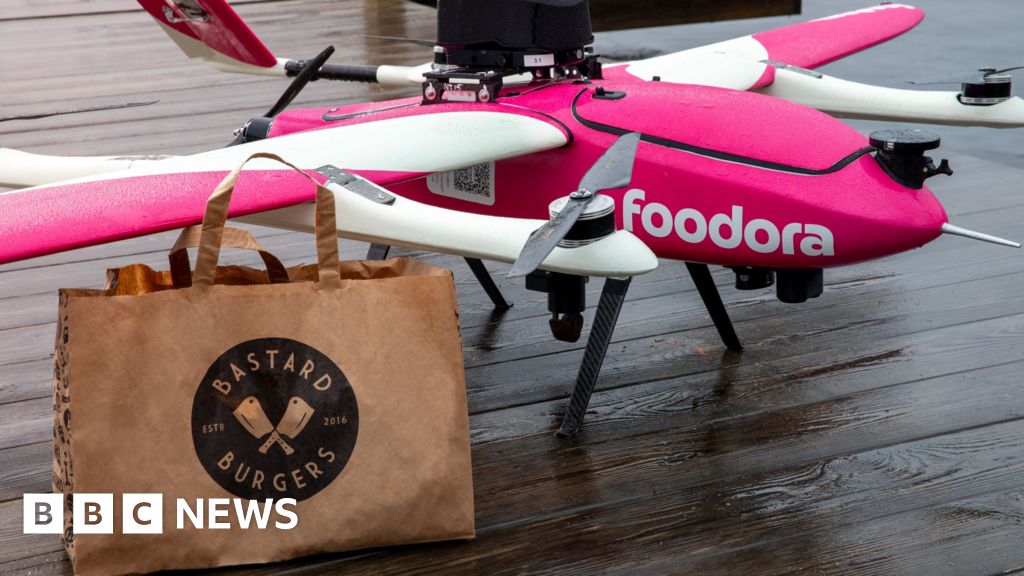
Will drones deliver your next hot food order? This question is becoming increasingly relevant as Norwegian start-up Aviant pioneers the region’s first drone-based food delivery service. The initiative, currently in its beta phase, is set to transform the way residents of the Swedish island of Värmdö receive their meals, potentially expanding to other parts of Scandinavia.
Boasting nearly 700,000 islands collectively, Sweden, Norway, and Finland have the most islands in the world. These islands, while rich in history and culture, often lack the convenience of hot food delivery that city dwellers take for granted. Aviant aims to bridge this gap, starting with Värmdö, located just eight miles from Stockholm. Despite its proximity to the capital, Värmdö’s 46,000 residents, which can swell to 100,000 in summer, have limited access to hot food delivery options.
Drone Delivery: A New Frontier
Since February, Aviant has been delivering freshly made burgers from the Scandinavian chain Bastard Burgers directly to homes in Gustavsberg, Värmdö’s main town, using drones. The cost of delivery is comparable to traditional car or bike services, as drones eliminate the need for a driver. Currently, the service is in a “beta phase,” with only 10 deliveries per week, but plans are in place to scale up throughout the year.
Aviant’s co-founder and CEO, Lars Erik Fagernæs, based in Trondheim, Norway, highlights the potential of this service. “There are 87,000 people who don’t have access to a home delivery service,” he explains, pointing to a map. “These people live in what you would call suburbs and would want to order takeaway food, but they just don’t have an option.”
Expanding Horizons
Aviant is also preparing to launch a similar service on the Norwegian peninsula of Nesodden, a location just four miles from Oslo but a 29-mile road journey. This expansion could provide home delivery access to another 100,000 people who currently lack such services. However, the process has not been without challenges. Several trials were necessary to ensure the food remained hot and fresh during the maximum flight time of up to 10 minutes over a radius of six miles.
“We have been testing this for three years, and in the beginning, there were a lot of soggy fries,” recalls Mr. Fagernæs. “But we have improved the isolated container the burger goes in, and now we know it arrives warm, even in the winter months.”
Challenges and Opportunities
Despite the promising start, drone delivery in remote areas poses significant challenges. Aviant previously attempted to deliver Thai, Italian, and sushi to residents outside Trondheim, Norway, but the service was discontinued in August 2023 due to financial viability issues. Similar ventures by other companies have faced the same hurdles.
For instance, UK firm Skyports delivered school meals to children in the Orkney islands in 2022, funded by Argyll and Bute Council. However, without government or corporate sponsorship, such services are not commercially sustainable. The cost of delivery over long distances is prohibitive for customers and too expensive for food outlets to absorb.
Global Perspectives
Drone delivery is not just a Scandinavian experiment. In China’s eastern Zhejiang province, local councils fund drone delivery of hot meals to elderly villagers isolated in mountainous regions. Meanwhile, Skyports has been running a drone delivery service with Royal Mail across the Orkneys since 2023, exploring ways to expand the service to include hot meal deliveries.
“We haven’t yet opened it up to other non-Royal Mail users as it’s currently strictly a Royal Mail service,” explains Alex Brown, Skyports director. “But absolutely, we can be looking at when those drones aren’t in use, how we could be taking cargo from outlets on the mainland to the islands.”
The Future of Drone Delivery
As Aviant and other companies continue to refine their technology and business models, the potential for drone delivery in remote and semi-urban areas remains significant. Aviant has identified around 40 bases across Scandinavia for expansion over the next two years, with similar opportunities in Canada and the northeastern United States.
While high winds may occasionally ground drones, Mr. Fagernæs expects the service to have a 90% uptime. The next steps for Aviant involve perfecting their pilot services in Värmdö and Nesodden, which could serve as a blueprint for broader implementation across regions with challenging geographies.
As technology advances and logistical challenges are addressed, drone delivery could become a staple in the food service industry, offering a unique solution to the geographical constraints that have long limited access to convenient meal options for many communities.







